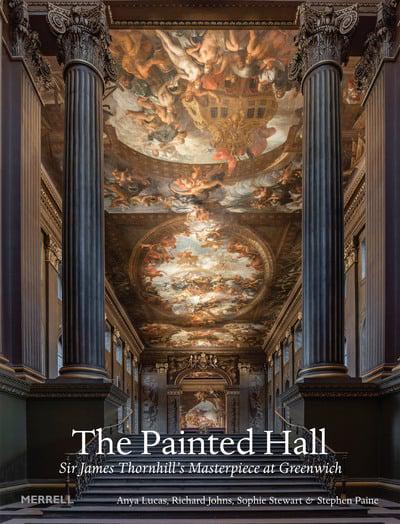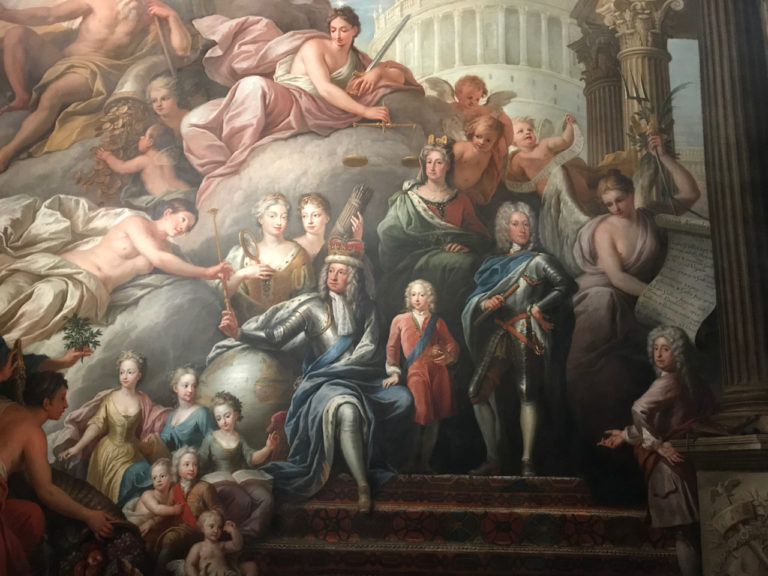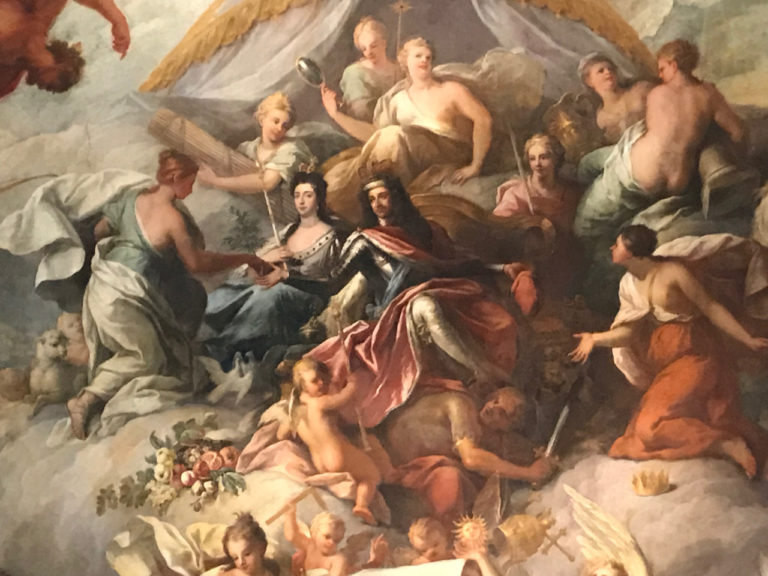Post
BOOK REVIEW | The Painted Hall
24 Mar 2020
The Painted Hall: Sir James Thornhill’s Masterpiece at Greenwich
By Anya Lucas, Richard Johns, Sophie Stewart & Stephen Paine
(Merrell, £40)
Reviewed by Katie Wignall
This review is taken from the 2020 edition of The Journal of The London Society.
Were you lucky enough to visit Greenwich’s Painted Hall while it was being refurbished? It was extraordinary to climb the scaffolding and be within touching distance of the vast mural. From a foot away it was strangely distorted, never intended to be understood at this close range. However the guided tours explained the history, symbols and insider details that make this one of the most impressive artworks in London.
The Painted Hall, a wonderfully illustrated book from Merrell, is rather like a second chance to get up close and personal with the masterpiece.
The coffee-table hardback features manageable essays that take you through the history of the Old Royal Naval College and the background and early career of the ceiling's artist, James Thornhill. A wealth of images explain how to read the mural and the final section recounts the story of successive refurbishments.
Although the Painted Hall, completed over 19 years, is regarded as England’s Sistine Chapel (a lazy but satisfactory phrase that the book avoids), its artist remains relatively unknown, an oversight addressed in the preface by William Palin. The more one delves into Thornhill's story, the more outrageous his being overlooked seems. Palin does highlight a silver lining, though; the opportunities to provide readers with a wealth of new discoveries.
The mural itself cannot be seen as distinct from its context. The subject is the ‘Glorious Revolution’ of 1688, a non-violent invasion in which William Duke of Orange was invited to be King of England. In an unprecedented (and as yet unrepeated) event, King William III and Queen Mary II ruled as an equal partnership: she as the daughter and successor of the catholic King James II, he as a safe pair of protestant hands.
William and Mary sit in the centre of the drama, described in the book as ‘an operatic production of the most ambitious kind’ It’s a story of unbridled patriotism for a new protestant English monarchy. And it’s not meant to be subtle. With the help of wonderful photographs it’s clear to see William triumphing over the French King Louis XIV. A papal crown and mitre tumble away while the defeated enemy holds – in case there’s any doubt – a broken sword covered in fleurs-de-lys.
The irony is that this story of protestant English victory is told in the language of bombastic Roman Catholic European art. Thornhill began his career as an apprentice to the Worshipful Company of Painter-Stainers, but quickly excelled and was heavily influenced by the Italian mural painter Antonio Verrio. It was probably his first large commission from the Duke of Devonshire at Chatsworth House that then won him the job at Greenwich and later St Paul’s internal dome. He was knighted in 1720 and Richard Johns describes him as ‘for a short time at least, the most celebrated British artist who had ever lived.’
The book concludes by celebrating the other half of the story. Sophie Stewart and Stewart Pain take us through the various restoration projects that are so necessary for a large mural of this kind. They shed light on the ‘far-sighted’ 1950s restoration from Westby Percival-Prescott who through minimally invasive intervention paved the way for the recent spectacular refurbishment, finished in early 2019 and allowing the Painted Hall once again to be open to the public to look up in wonder.
Katie Wignall is a Blue Badge guide and runs walks and tours around London via her website lookup.london


